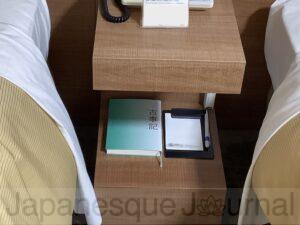Purpose of visiting Nara
I decided to visit Kashihara in Nara Prefecture, the ancient capital of Japan. In addition to Fujiwara-Kyo ruins, the ancient capital of Japan, Kashihara City has many ancient tombs and archaeological museums.
First, on the way to Kashihara from Nara, I got dango dumplings at Dango-Sho, a famous sweet shop. Dango-Sho’s dango dumplings are famous for their delicious taste, but they are hard to get because the expiration date is the same day. I became interested in trying it after my favorite account recommended it.
奈良にうまいもの無しという言葉があったりしますが、何度かツイートしてますが橿原市にある「だんご庄」というお団子屋さんの団子がむっちゃくちゃ美味いので橿原方面行く時は是非食べてみてください。
https://twitter.com/goshuinchou
わたしは、奈良派。楽しい。 pic.twitter.com/MHsuI9h2Cj— 幣束 (@goshuinchou) March 4, 2019
Overnight in Nara City
I decided to stay overnight at a hotel near Kintetsu Nara Station and head toward Kashihara the next day. I would have had to change trains at Yamato Saidaiji Station to Kashihara-City from Kintetsu Nara Station, so staying overnight near Yamato Saidaiji Station would have been better. The shopping streets near Kintetsu Nara Station and Naramachi are okay to find places to eat at night, but there are surprisingly few restaurants compared to those in Osaka and Kyoto. Most of them are bars, so there are not many options if you do not drink alcohol. Nara is famous for Kakinoha Sushi, but I passed on it this time and had Chinese food. Kakinoha Sushi is a type of sushi wrapped in persimmon leaves, designed to allow for the consumption of fresh fish even in the inland.


Dango-Shou Yagi branch
Departing from Kintetsu Nara Station
In the morning, I saw a deer on my way to Kintetsu Nara Station. Most of them live in Nara Park, near the station. I was surprised that I don’t have to go to Nara Park to see deer. They had become so accustomed to people that they allowed me to take pictures without hesitation.


I took a train from Kintetsu Nara Station. On the way from there to Yamato Saidaiji Station, I saw a large grassy field on my left. It was the site of the Heijo-Kyo ruins. The city had recently renovated it, and the exhibits were more substantial than before. At Yamato Saidaiji Station, I changed trains toward Kashihara Jingu-Mae. There were several places to get on the train, and I almost returned to Nara Station. I got off at Yamato Yagi Station and made my way to Dango-Sho Yagi branch. While I initially wanted to visit the main store, I decided to drop by the Yagi store since it was conveniently located on the way from Yamato Saidaiji Station to Kashihara Jingumae Station.

From Yamato Yagi Station to Dango-Sho
Getting Dango-Sho Yagi branch from the station took me only three minutes. Although it was earlier than the opening of 9:30 a.m., people were already in the store, and everyone was buying as usual. I also went in and bought two for myself, and big box for my souvenir. It seemed to be cash only. I asked if I could eat them in the store and was told that they were not available in the Yagi branch. I should have gone to the main shop. While I was buying, more and more customers were coming in, and it was a crowd in the morning. A local man who came later bought three ten-packs. The big box is echonomical, but it is probably more convenient to buy a lot of small packages to give out to people. Considering the expiration date was within the day, the man was smart.
Dango dumplings of Dango-Sho
These are dango dumplings from Dango-Sho. They are coated in soybean flour and have a soft texture that resembles rice cakes more than traditional dumplings. The taste is simple, without excessive sweetness.


Conclusion
After trying the dango dumplings from Dango-Sho, I found their simple and nostalgic taste to be delightful without any fancy decorations. However, it’s important to note that Dango-Sho does not have a store in Nara City. Nevertheless, there are stores in the city that were opened by artisans trained at Dango-Sho. For instance, the Kintetsu Nara Station Branch of Dango-Tama-Usagi offers the traditional taste of Dango-Sho at Kintetsu Nara Station. If you ever get the chance, be sure to try these delicious dango dumplings from Dango-Sho!
After this, I will finally head to the important historical city of Kashihara. See the next blog post for details visiting Kashihara.


